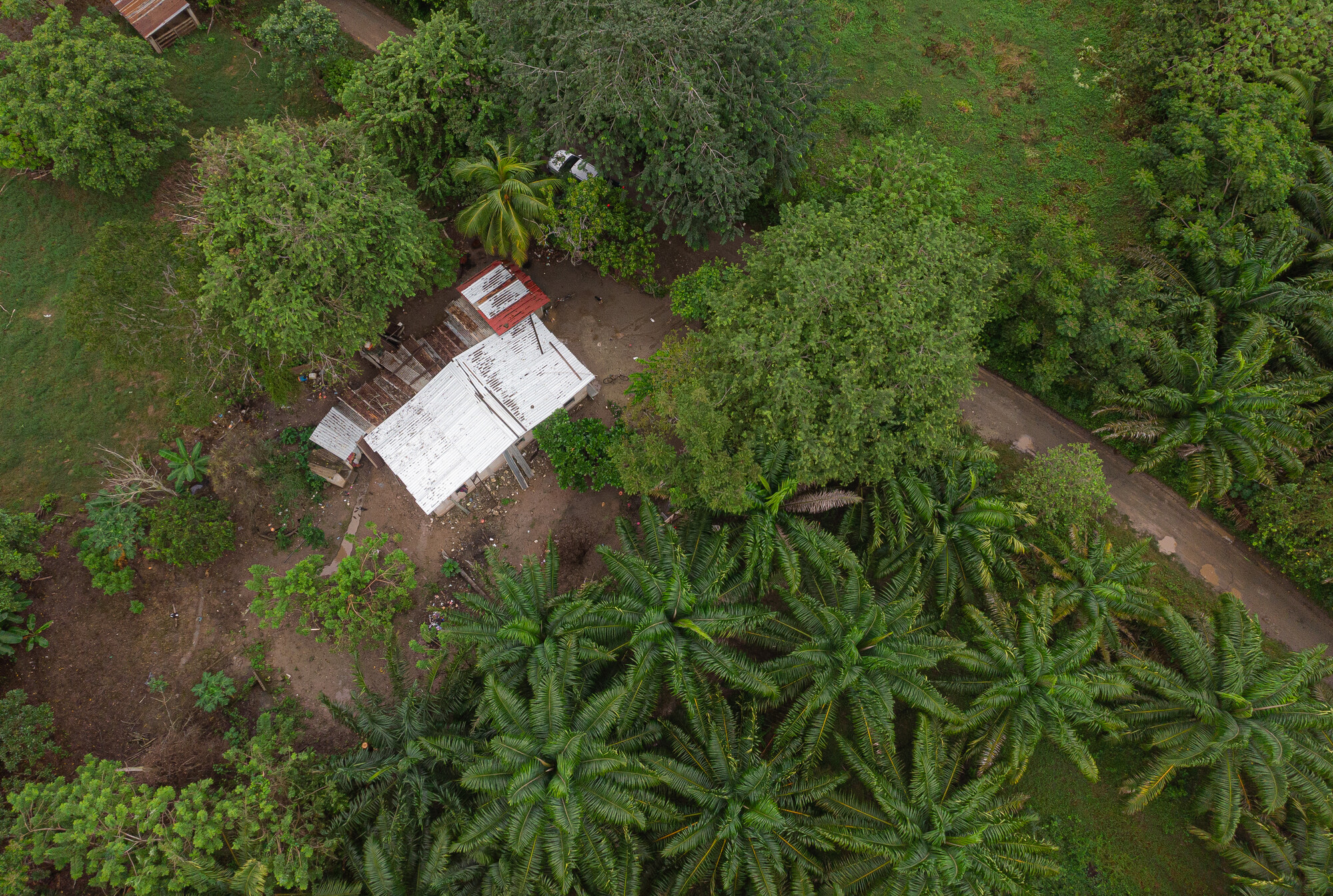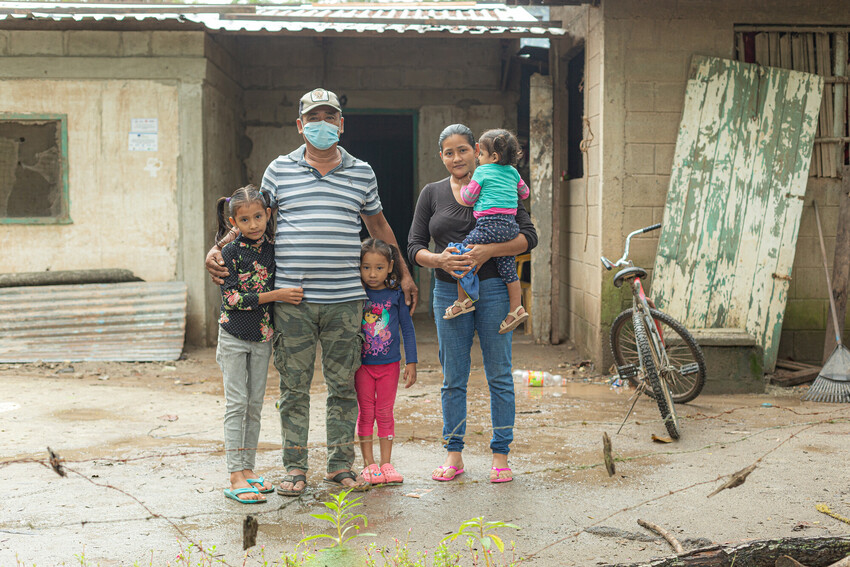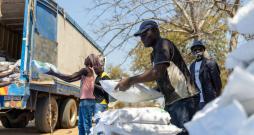Loss and damages is a climate justice response

This summer, the wildfires raging across Canada became a visceral symbol of the devastating consequences of climate change. Choking huge swaths of North America in smoke, burning down homes and buildings, eating up thousands of acres of forests and forcing evacuations of multiple communities, the fires brought climate change closer to home than ever for millions of people.
These fires offered Canadians a clear visual of what a changing climate means for our daily lives. Some environmental problems are easier to visualize and conceptualize than others. For example, we can more easily see how overfishing, pollution or deforestation can have disastrous and long-term consequences. Climate change is more complex than that. We cannot easily imagine the finite amount of C02 emissions that our atmosphere can absorb safely in the way we understand the immediate impacts of a toxic chemical spill, or the logging of an entire forest (think of The Lorax). These kinds of situations have clearer and more immediate consequences, and responsibility can more easily be assigned to corporations and industries (or perhaps just one man with a dream to create the perfect thneed).
The invisibility of carbon emissions makes the urgency and accountability of addressing climate change more difficult. However, complexity is not an excuse to overlook responsibility and reparation for the consequences of climate change.

Climate-related disasters like the devastating floods in Pakistan and India, heatwaves and fires across Canada, Europe and the U.S., and powerful cyclones in the Pacific, have impacted millions, including us. Climate change is affecting everyone, but hotter and dryer places, and those closer to sea level, are experiencing more dramatic effects. The Intergovernmental Panel on Climate Change (IPCC) estimates that 3.6 billion people – 45% of the world’s population, live in areas that are “highly vulnerable” to climate change. This means that they are more likely to experience the effects of climate change and that these effects will result in greater losses – of homes, infrastructure and livelihoods – and more difficult recoveries.
Most of these highly vulnerable places are among the lowest emitters of greenhouse gases. These are places like Haiti, Pakistan and Ethiopia, where per capita emissions are dozens of times lower than in Canada or the U.S., but where people are faced with the destructive impacts of climate change every day. For this reason, climate-vulnerable countries have been calling for funding to address the climate-related losses and damages that they are experiencing. These calls began in 1991, from Vanuatu and other Pacific Islands, who were facing the dangers of sea level rise from a warming climate that they did not contribute to. These conversations first introduced the concept of “loss and damages” into international climate conversations, but it was not until 2022 that countries officially agreed to create a Loss and Damages Fund.
The concept of compensating countries for the loss and damages they experience is a critical element of climate action and climate justice: it addresses not only the very real and urgent damages that countries are experiencing from climate change but also the underlying injustice of responsibility. For example, Canada’s share of the total global amount of carbon emissions since 1750 is almost 2%. Mozambique, a country with a similar population size, has contributed only 0.01% to this total[1]. Mozambicans, despite shouldering this tiny fraction of the responsibility, are experiencing significant climate impacts, including the deadly and costly cyclones in 2019.
Climate responses are often thought of as belonging to two categories: mitigation and adaptation. In simple terms, mitigation is tackling the root causes of climate change through reducing greenhouse gas emissions. Adaptation is changing systems and practices to help people and communities adapt to the changes that a warmer climate brings. However, the series of extreme climate events that have occurred in the last few years have indicated that climate change is already bringing devastating effects that cannot simply be adapted to. Pacific Islanders cannot be expected to adapt to losing their homes and livelihoods to sea level rise. While bold and cooperative climate action can avoid the worst, some level of impact from climate change simply cannot be avoided, which is where loss and damages occur and compensation and support are needed.
The inclusion of loss and damages as an official part of global climate finance structures raises a few complex questions. The first consideration is how loss and damage should be defined. Climate change has both economic and non-economic consequences. For example, flooding in Pakistan led to billions of dollars in damage to infrastructure, buildings and vehicles, losses which can be clearly measured in dollar amounts. The same disaster also led to over a thousand deaths, great ecological damage and psychological distress as millions were displaced from their homes and livelihoods. Human, ecological and emotional damages like these do not come with an easily quantifiable financial cost factor but are certainly climate-related losses.
A further difficulty in defining loss and damages relates to timescale. Direct impacts from disasters like cyclones or wildfires are easier to identify. But slowly occurring loss from sea level rise, temperature changes or melting permafrost are harder to pinpoint. Attributing specific losses to climate change-related events can also create difficulties, as climate change worsens many naturally occurring weather events. And finally, there are many financial factors to be worked out, such as who is eligible for this funding, who will pay for it and whether it will be additional to other financial commitments, or whether funding could come at the expense of other important climate priorities.
While these questions must still be worked out, the introduction of the Loss and Damages Fund, projected to become operational by the end of this year, is an important milestone. Loss and damages is most importantly a justice issue. An effective and generous loss and damages fund would offer new hope and meaningful cooperation to international climate negotiations. UN Secretary-General António Guterres described loss and damage as a “fundamental question of climate justice, international solidarity and trust.” Justice, solidarity and trust are exactly what the world needs, and especially when it comes to solving complex collective problems like climate change. Loss and damage compensation isn’t just about finances; it’s about recognizing our shared responsibility to protect and care for all humanity. By supporting vulnerable communities, we are collectively investing in a safer and more resilient world for everyone on our planet.
Header photo caption: In November 2020, Hurricanes Eta and Iota stormed through Central America within two weeks. Due to the impacts of climate change, that year was one of the most active hurricane seasons on record, with Iota being the strongest hurricane this late in that season. MCC's local partner helped families rebuild homes that were damaged. (CASM photo/Absalón Cálix)

